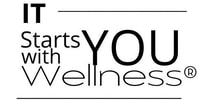Journaling

Journaling is a great way to be able to track not only your results, but your feelings as you progress thru this journey. This is a place where you can be totally honest with yourself. Nobody can judge your thoughts. It's only you and your journal.
If you never have journaled before, you can find a journal book at your local store. I typically write at the top of the page the day of the week and date, including year. Each day, or as you feel, you can start with your current thoughts and feelings and sensations. "How am I feeling this morning or today", and try to describe each feeling, emotion, and sensation in your body as best you can.
Then start your daily practice. After your practice, you can write down how you feel again, taking note of any changes in emotions, sensations, or just how you feel.
By writing, you are bringing awareness to how you feel. This is very important, especially when you are looking to change old habits. You may notice that your feelings may be hindering you from change. The more you are honest with yourself, and aware of how you feel during certain aspects of your life, the easier it can be to put forth positive changes.
As you continue to journal daily, you may also notice that more emotions may come up. Write about it. Write about how you feel when these thoughts come up. Remember it's all GOOD! Bringing these thoughts forward is tapping into what is going on in the subconscious. The more they come up, the better you can deal with them. You may realize that some of your thoughts are pointless, and others can be significant. (Please note, that if you have been traumatized at any point in your life, it may be good for you to seek a professional therapist while on this journey. I only say this because this type of work can bring up un-resolved issues that you may not realize, and depending on HOW traumatic the episode, talking to a professional would be a great way to sort it all out.)
Just remember whatever comes up for you, that it is all good. It brings you closer to the real issue(s) at hand, and the reasons you may be having so much anxiety. The more aware you are of the CAUSE, the closer you are to letting it go. Your mind will realize that you aren't in any danger, and will be easier to release the need to "fly" in panic.
Happy journaling!!!
If you never have journaled before, you can find a journal book at your local store. I typically write at the top of the page the day of the week and date, including year. Each day, or as you feel, you can start with your current thoughts and feelings and sensations. "How am I feeling this morning or today", and try to describe each feeling, emotion, and sensation in your body as best you can.
Then start your daily practice. After your practice, you can write down how you feel again, taking note of any changes in emotions, sensations, or just how you feel.
By writing, you are bringing awareness to how you feel. This is very important, especially when you are looking to change old habits. You may notice that your feelings may be hindering you from change. The more you are honest with yourself, and aware of how you feel during certain aspects of your life, the easier it can be to put forth positive changes.
As you continue to journal daily, you may also notice that more emotions may come up. Write about it. Write about how you feel when these thoughts come up. Remember it's all GOOD! Bringing these thoughts forward is tapping into what is going on in the subconscious. The more they come up, the better you can deal with them. You may realize that some of your thoughts are pointless, and others can be significant. (Please note, that if you have been traumatized at any point in your life, it may be good for you to seek a professional therapist while on this journey. I only say this because this type of work can bring up un-resolved issues that you may not realize, and depending on HOW traumatic the episode, talking to a professional would be a great way to sort it all out.)
Just remember whatever comes up for you, that it is all good. It brings you closer to the real issue(s) at hand, and the reasons you may be having so much anxiety. The more aware you are of the CAUSE, the closer you are to letting it go. Your mind will realize that you aren't in any danger, and will be easier to release the need to "fly" in panic.
Happy journaling!!!
